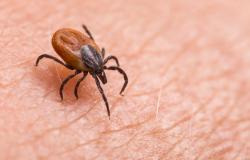Tobacco-free, alcohol-free and now sugar-free. Second edition of “June without added sugars”, an awareness campaign launched and organized by the SOS Hepatitis & Liver Diseases Federation. As for the other two “free months”, the principle consists of reducing our consumption of sugars, in particular those called “hidden” or “added”, the most harmful to our health. Ready for the challenge ?
Is proposing a month without added sugars in the middle of June, that of fruit and ice cream, reasonable? The answer is yes, and rather twice than once. Sugar, and especially added or hidden sugars, has taken up too much of our diet. The National Agency for Food, Environmental and Occupational Health Safety (ANSES) recently recalled this in its Assessment and evolution of the use of sweetening ingredients or sweet taste vectors in processed products (March 2024). Just one figure: of the 39,101 products monitored – divided into 31 food categories – 77% of them mention at least one sweetening product in their list of ingredients, or 30,034 products. Glucose, fructose, sucrose, lactose, maltose, corn syrup, etc., ANSES identifies 11 different forms of sugars.
In children’s toothpastes
In light of this description, the “June without added sugars” initiative, launched in 2023 by the SOS Hepatitis & Liver Diseases Federation, and supported, for this second edition, by the National Association of Hospital Hepato-Gastroenterologists (ANGH) and the European Association of Liver Patients (ELPA), is essential, if only to provide keys to understanding and benchmarks. “As with Dry January and the Month Without Tobacco, this operation aims above all to make the French aware of their own consumption”specifies Thomas Laurenceau, member of the “June without added sugars” steering committee.
And the challenge of reducing your consumption of added sugars for a month seems to be catching on. This is evidenced by the success, in terms of membership, of the first edition. Success which was expressed through a questionnaire sent on social networks and intended to measure the interest, motivations, feelings, etc., of the participants. “Last year, 89% of participants said they were happy to have participated and of the 88% who had reduced their consumption of added sugars, 83%, at six months, said they had reduced their consumption, including 45% significantly », reports Thomas Laurenceau. As for the benefits, they are of all kinds, weight loss, better sleep, better mood and even a “brand new” palate, capable of identifying the (bad) taste of added sugars.
If sugar is necessary for our body, in terms of energy intake, all sugars are not equal. Between strawberries (natural fructose ingested with fiber, preferably during meals) and a soda (industrial fructose, various syrups), for example, the former are preferable, in terms of less danger – in this regard, it is better to do the main part of vegetables. And, moreover, excess sugars are bad for your health, which means knowing how to detect them, even where you don’t expect to find them (cold meats, margarine, soups, hot sauces, frozen ready-made meals). , white bread, fresh delicatessen products, etc.), so as not to consume them without your knowledge. “It’s even found in children’s toothpastes”, indicates Thomas Laurenceau. ANSES recommends not exceeding 100 g of sugars per day. Indeed, we are not genetically programmed to consume too much sugar.
When the liver toasts
In addition to the risk of gaining overweight, obesity, metabolic syndrome, type 2 diabetes, cardiovascular disorders, among others, linked to a high consumption of sweet-tasting ingredients, it is a pathology which, for several years , is gaining ground, to the point of having become the leading cause of liver transplants in the United States and the second cause of cirrhosis in France after alcohol. Its name, metabolic hepatitis or MASH (formerly NASH), for liver disease associated with metabolic dysfunction, still known by the immediately meaningful name fatty liver disease. Explanations from Dr Pascal Mélin, from the internal medicine and hepatology department of the Saint-Dizier Hospital (Haute-Marne): “Fructose is a sugar that we cannot metabolize directly, so it is forced to pass through the liver which transforms it into triglycerides, that is to say, into fats. In the event of overconsumption of added sugars, fats will accumulate in the liver, with harmful long-term consequences.. This excess fat that the body cannot absorb will lead to inflammation which, itself, can cause a reaction in the body such as liver fibrosis, which over time, and in the absence of changes in its eating habits, can develop into cirrhosis.
“Today, 8 million French people have fat in their liver, 10% of whom develop MASH. Clearly, 800,000 people are entering a liver-destroying disease and 200,000 are in a state of pre-cirrhosis or cirrhosis. And, every year, 4,000 people will develop liver cancer”, alerts Dr. Mélin. Cancer (hepatocellular carcinoma) is in fact a frequent complication of cirrhosis. If up to a certain stage, the disease is reversible (new diet, physical activity), it still needs to be identified. This is the other problem with MASH: apart from being significantly overweight or obese, it is asymptomatic. No signal, for example, in blood tests. Only a biopsy can diagnose it, which means the disease is often discovered too late. “Sugar should be put on the same level as alcohol in terms of health impact. This is a major public health problem.”estimates the president of the SOS Hepatitis & Liver Diseases Federation.
The “3 V” rule
The good news is that fatty liver disease is preventable. The month of June without added sugars is an opportunity to do education, between learning and common sense. A can of soda from time to time is fine, a 1.5 liter bottle per day, hello damage! Same instructions for industrial pastries, white bread, etc., everything that relates to what we call ultra-processed foods (AUT), which we also know, points out Thomas Laurenceau, “that they are generators of metabolic diseases”. And at home, (plain) yogurt or homemade cakes, we eliminate or reduce the quantity of sugar by 30 to 50%. “It’s also good”, assures Thomas Laurenceau. At the same time, you must be vigilant regarding the label which lists the different ingredients. “The sugars present in the product are not necessarily grouped under the generic term sugars, warns Dr Mélin. They can be disseminated in various places, depending on whether they are syrup, maltose or glucose. As a result, sugar can be the main ingredient without being at the top of the list. » In short, you have to be vigilant. Especially since sugar, like salt, is also a preservative and a flavor enhancer – in the form of lemon juice, honey, etc.
“To escape added sugars and defuse the MASH bomb, we must adopt the 3 V rule, truly, plant-based, varied”, recommends Thomas Laurenceau, citing nutritionist Anthony Fardet. From this point of view, the SOS Hepatitis & Liver Diseases Federation is in agreement with public health messages. “The aim of our action is not to ban sugar, in fact everywhere, but to question the contents of our plates and to think about alternatives in our daily lives. The image of analgesic, sweet, comforting sugar is misleading”, adds Dr Mélin. As with all challenges, the collective counts enormously, both in terms of support and tips for recipes or overcoming a difficult milestone. Because, yes, in some people, sugar can induce a form of dependence. This is why the federation provides a helpline to people who find themselves in difficulty. At the end, a medical team able to help them. Sugar, an irreplaceable pleasure? What if we talked about it.






